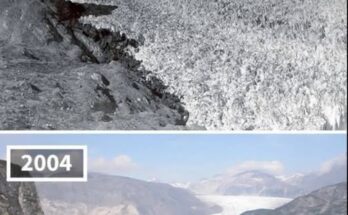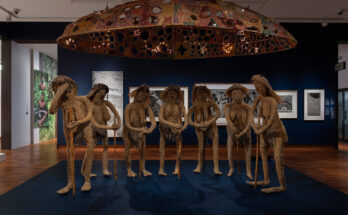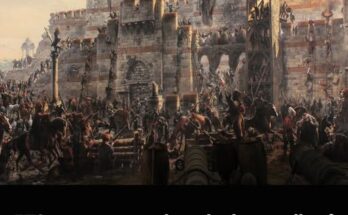I. The Arrival of Empire
In the 16th century, the Spanish Empire surged across oceans with hunger in its heart and gold in its eyes. Armed with steel swords, muskets, and horses—animals the native peoples had never seen—the conquistadors swept through the Americas, crushing the Aztecs in the north and toppling the mighty Inca Empire in the south. But when they reached the lands of the Mapuche—what is now southern Chile and parts of Argentina—they met something they hadn’t encountered before: an unbreakable will.
The Spanish, led by Pedro de Valdivia in the early 1540s, expected quick domination. After all, they had just dismantled the sophisticated empires of the Andes. But what they failed to understand was that the Mapuche were not centralized like the Inca. They were decentralized, organized by extended families or lof, deeply connected to their territory, and fiercely independent. This made them less vulnerable to the kind of centralized decapitation the Spanish relied on to subdue other peoples.
From the very beginning, the Mapuche resisted. When the Spanish attempted to establish settlements, the Mapuche launched raids. When they built forts, the Mapuche laid sieges. They were not passive recipients of conquest—they were dynamic actors who would become the fiercest indigenous resistance force in the Americas.
II. Lautaro: The War Child Who Became a General
Among the many names etched into the stones of Mapuche resistance, one stands above the rest: Lautaro. Born as a Mapuche boy in the early 1530s, Lautaro was captured by the Spanish and forced into servitude as a yanacona, or native assistant, to Pedro de Valdivia himself. While working under the Spanish commander, Lautaro learned their military strategies, studied their weapons, and observed the weaknesses in their overconfidence.
But his loyalty was only a mask. Lautaro escaped in 1553 and returned to his people. He did not come back as a broken servant—he returned as a military mastermind. Using the knowledge he had gained, Lautaro trained Mapuche warriors to fight like the Spanish: on horseback, in formations, and with guerrilla tactics. The transformation was revolutionary.
In the same year, Lautaro led an army of thousands to victory at the Battle of Tucapel, where the Mapuche ambushed and killed Pedro de Valdivia. The symbolic weight of this victory cannot be overstated. It was not just the death of a conquistador—it was the shattering of imperial arrogance. The empire could bleed. It could lose.
Lautaro would go on to win more battles before he was eventually killed in 1557. But by then, his spirit had ignited a movement that no death could extinguish.
III. A War Without End
The Spanish believed the resistance would crumble with Lautaro’s death. They were wrong. For centuries—yes, centuries—the Mapuche continued to fight. This wasn’t a brief rebellion; it was an enduring war of attrition, a multi-generational struggle.
The conflict, known historically as the Arauco War, became one of the longest indigenous resistances in world history, stretching from the 1540s well into the 1880s. The terrain of southern Chile—thick forests, rivers, and mountains—played to the Mapuche’s advantage. The Spanish, frustrated and humiliated, resorted to building fortresses along the frontier. These became static symbols of imperial limits rather than expanding influence.
Every time the Spanish thought they had the upper hand, the Mapuche adapted. They shifted from direct confrontation to guerrilla tactics. They captured Spanish horses and made them their own. They forged alliances, reorganized their leadership, and even developed diplomatic protocols to negotiate temporary truces with colonial authorities when it suited their interests.
In 1598, they launched what would become one of the most devastating blows to the Spanish: the Destruction of the Seven Cities, in which they wiped out Spanish settlements south of the Bío-Bío River. It was a stunning reversal of colonial momentum. For a time, the Mapuche regained control of their ancestral lands.
IV. Beyond Warfare: A Culture of Resistance
While the battles raged, so too did the cultural resistance. The Mapuche language, Mapudungun, survived despite Spanish attempts to erase it. Their rituals, cosmology, and spiritual leaders—machi—remained central to community life. The machi, often women, served not only as healers but as custodians of memory and identity.
This cultural resilience was just as vital as military strength. Conquest is not only a matter of territory—it is also an assault on the soul. And the Mapuche, through oral tradition, song, poetry, and ritual, refused to let that soul be broken.
Art became resistance. Ceremony became defiance. Memory became a weapon.
They passed down the stories of Lautaro, Caupolicán, and countless unnamed warriors through generations. To this day, Mapuche children grow up with these heroes—not from textbooks, but from the lips of grandparents around firelight, from murals on city walls, and from music echoing through rural valleys.
V. The Colonial Legacy and the Republics
When Chile gained independence from Spain in 1818, many assumed that the Mapuche would finally be left in peace. But the dream of independence, forged by the creole elite, did not include indigenous sovereignty.
In fact, the newly formed Chilean state picked up where the Spanish left off. Under the banner of “civilizing the frontier,” Chile launched the Pacification of Araucanía in the late 19th century. This campaign, marked by military invasions, land seizures, and forced assimilation, aimed to break Mapuche resistance once and for all.
But while the Chilean government succeeded in occupying Mapuche land, they failed to extinguish Mapuche identity. What followed was a different kind of resistance—legal, cultural, and political. Dispossessed of their ancestral territories, Mapuche communities faced poverty, marginalization, and systemic discrimination. Yet they continued to fight—not always with arms, but with ideas.
They formed organizations, demanded land reform, defended their language, and entered the political arena. Every generation produced new leaders, new thinkers, new artists who redefined what it meant to resist in modern times.
VI. Modern Struggles, Ancient Roots
Today, the Mapuche are at the forefront of indigenous rights movements in Latin America. They protest against multinational corporations exploiting their land, fight for the return of ancestral territories, and demand recognition in Chile’s constitution. In recent years, clashes with police and private security forces have become tragically common, and some Mapuche activists have been criminalized under anti-terrorism laws.
Despite this, the movement continues to grow. Young Mapuche are reclaiming their heritage, learning Mapudungun, reviving traditional farming practices, and connecting across borders with other indigenous nations. Artists like Ana Tijoux, academics like José Ancán, and spiritual leaders like Francisca Linconao have become cultural icons.
In 2021, for the first time in history, Chile elected a Mapuche woman, Elisa Loncón, as president of the Constitutional Convention tasked with drafting a new national constitution. Her presence, her voice in Mapudungun echoing through the halls of power, was the living proof of a people who refused to disappear.
VII. The World Watches
The Mapuche struggle is no longer confined to the southern cone of South America. It has become a global symbol of indigenous resilience and anti-colonial resistance. Scholars, activists, and environmentalists around the world have drawn parallels between the Mapuche and other indigenous peoples fighting for sovereignty—from the Lakota in the U.S. to the Sámi in Scandinavia.
Their fight is not just about land. It’s about worldview. The Mapuche envision a society in harmony with nature, governed by reciprocity and respect, where rivers are sacred and forests are alive. In a time of climate crisis, their voice is more relevant than ever.
As modern nations grapple with the legacy of colonialism, the Mapuche story reminds us that history is not a closed book. It is still being written—on the land, in the courts, in the streets.
VIII. Conclusion: The Resistance That Became Legend
When the Spanish came with steel and fire, the Mapuche did not bow—they rose.
They rose in the 1500s with spears and cunning. They rose in the 1600s with raids and reclamation. They rose in the 1800s with defiance against a republic that called them savage. And they rise still today, in classrooms, in parliaments, on social media, and in the sacred ceremonies of the forest.
Their story is not a footnote in history. It is a thunderous answer to conquest. A reminder that courage is not always in victory, but in endurance. That identity cannot be burned away. That some nations, even when crushed to the earth, rise like seeds.
This is not just the story of the Mapuche. It is the story of resistance itself.
And it is far from over.


